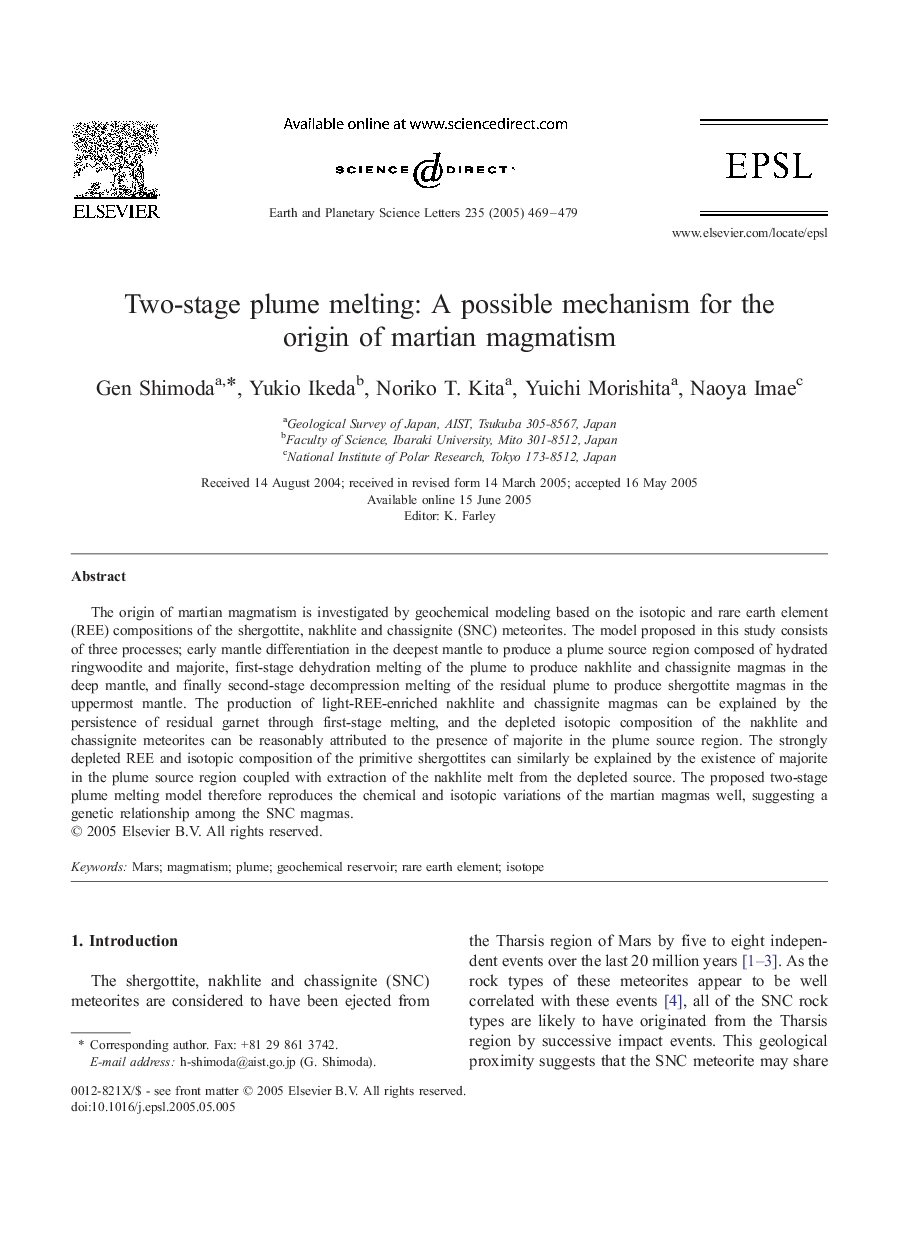| Article ID | Journal | Published Year | Pages | File Type |
|---|---|---|---|---|
| 9522205 | Earth and Planetary Science Letters | 2005 | 11 Pages |
Abstract
The origin of martian magmatism is investigated by geochemical modeling based on the isotopic and rare earth element (REE) compositions of the shergottite, nakhlite and chassignite (SNC) meteorites. The model proposed in this study consists of three processes; early mantle differentiation in the deepest mantle to produce a plume source region composed of hydrated ringwoodite and majorite, first-stage dehydration melting of the plume to produce nakhlite and chassignite magmas in the deep mantle, and finally second-stage decompression melting of the residual plume to produce shergottite magmas in the uppermost mantle. The production of light-REE-enriched nakhlite and chassignite magmas can be explained by the persistence of residual garnet through first-stage melting, and the depleted isotopic composition of the nakhlite and chassignite meteorites can be reasonably attributed to the presence of majorite in the plume source region. The strongly depleted REE and isotopic composition of the primitive shergottites can similarly be explained by the existence of majorite in the plume source region coupled with extraction of the nakhlite melt from the depleted source. The proposed two-stage plume melting model therefore reproduces the chemical and isotopic variations of the martian magmas well, suggesting a genetic relationship among the SNC magmas.
Related Topics
Physical Sciences and Engineering
Earth and Planetary Sciences
Earth and Planetary Sciences (General)
Authors
Gen Shimoda, Yukio Ikeda, Noriko T. Kita, Yuichi Morishita, Naoya Imae,
